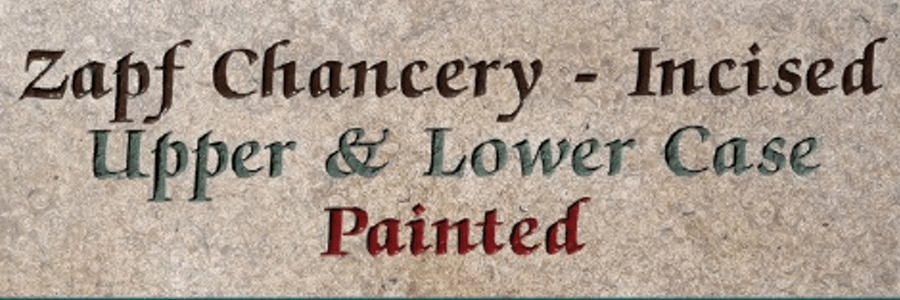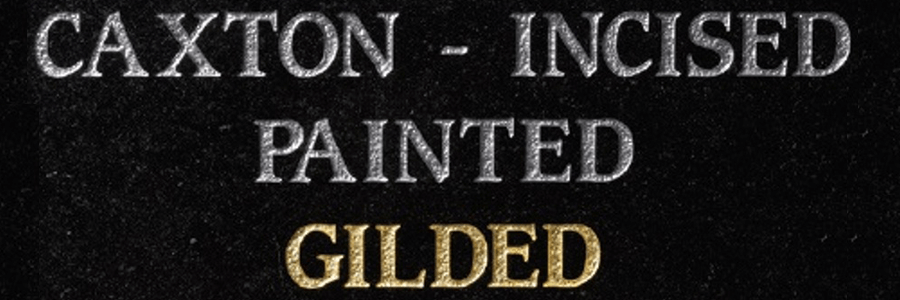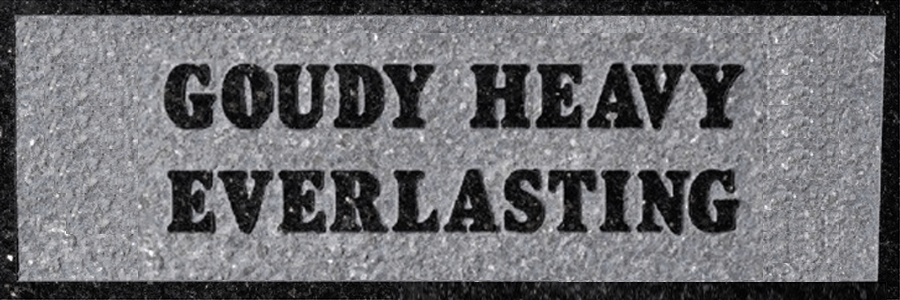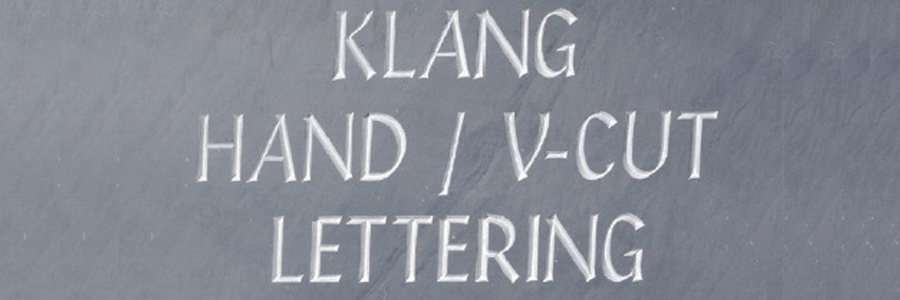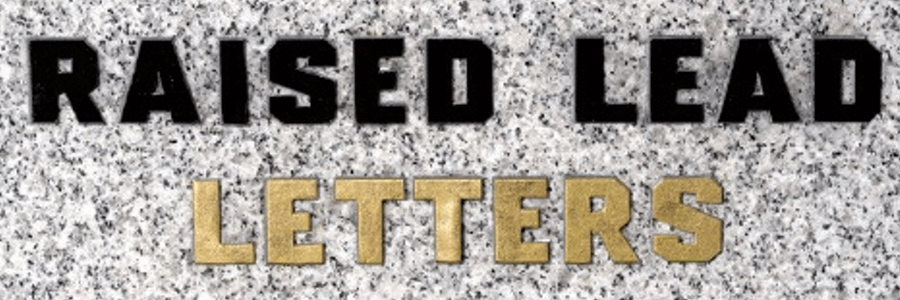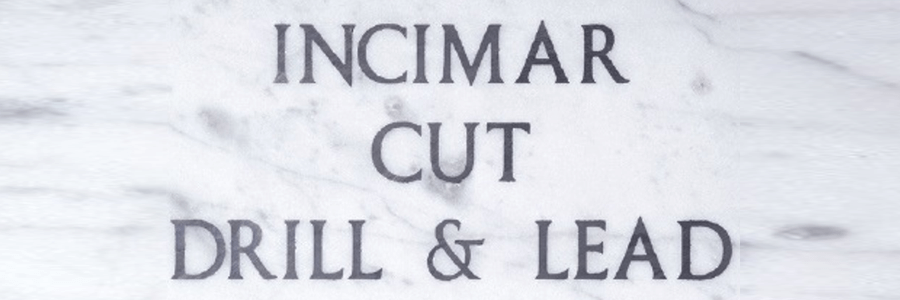Creating a Memorial
Here are a selection of lettering styles (fonts) more commonly used when inscribing memorials, when choosing a colour to go with your choice of material it is worth bearing in mind that light colours do not stand out on light materials, and of course the same applies for the dark colours on dark materials, in essence, you require a good contrast.
Raised lead, these letters stand proud on the surface of the stone, this method is most commonly used on granite and very hard stones. They are not stuck on. Firstly holes are drilled into the stone behind the letters, the lead is then beaten on to the stone and as it is soft, a proportion of it is pushed into the drill holes, this in turn acts as an anchor to hold the letters in place, remaining surface lead if then trimmed to shape as required, this can then be painted or gilded.
Drill and lead, the method similar to Raised lead, same that the letter is cut into the stone first, then the letters are drilled into, the lead is beaten into the letters, the excess is removed to leave a flush finish to the stones surface. Very commonly used on marble and limestone of a consistent structure, softer stones are usually composite filled to alleviate damage that would be caused by beating the lead into it. The method is not suitable for granite.

